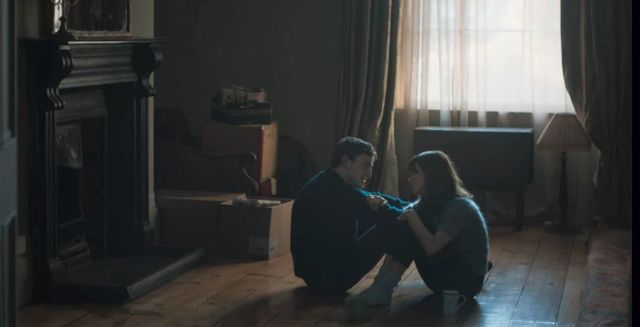By Megan Evans
The TV adaption of Sally Rooney’s bestselling novel Normal People has enfolded so much turmoil and heartbreak in front of us during this coronavirus outbreak. It is a complicated love story set in Northern Ireland, between two school students who have mutual fascinations and a friendship bond like no other despite their differing personality traits.
A synopsis of the storyline is fairly straightforward; a popular guy meets a loner who finds pleasure in academia, in comparison to socialising. They progress into a very intimate sexual relationship but have to keep their affections a secret. We then see the story take a twist, as Connell (Paul Mescal) becomes less popular and Marianne (Daisy Edgar-Jones) more so as they grow up. They manage to maintain their strong companionship through changes between their relationships and the separation of their lives, through interwoven events across a four year period.
Their relationship is so powerful because it resembles everything a relationship stands for, not just the cliques, but this bond unlike any other. They date numerous people, have awkward encounters but they could never hate each other. Every scene portrays a different side to their personalities – this comfortableness, this affection and love they have towards each other, and across the whole story, an unfiltered look at the need for that special someone. The show keeps in close relation to the novel, and the vulnerable qualities of both characters – Marianne’s intensity and her damage drawn from her family and isolation through her teenage years, and Connell’s emotional insecurity and self-doubt. Through the protagonists and their abundance of beautiful memories, you are taken on this journey as they too are also embark on their journey of self-discovery and pleasure through the joy of first love, and the brutal nature of betrayal. Through the hardships that they need to overcome, they console together.
It is interesting to consider what ÔÇÿnormal’ means for the two, and how they long to be an extension of the other person, and why they feel their conditions are out of reach of reality. This coming of age quality portrayed throughout strongly evokes the emotional shadings of their relationship, growing both stronger and more nuanced.
It shows us the beauty of having a first true love, the brutalities of life with death, isolation and mental health.
Both the book and show cover these issues in such realistic depth but keep you so happy and fulfilled because the pair always lean onto each other for support. The memories, the warmth, the constant use of flashbacks which shows this intimacy and how they have developed beautifully over the years makes my heart ache for this frustrating couple. We can see the tension as they embark on their separate journeys to adulthood through the people they met, the parties they attend, the completely separate lives they live.
The last scene was one of the most moving of the entire show, cultivating this real image of sex by allowing the exposure of the not too clean, extremely explicit but sexually stimulating full frontal nudity. This representation is so important for mainstream media for young people, to see the passionate love-making and embodying this intimacy including the awkwardness, the embarrassing teenage small talk to eventually build the confidence to explore each other physically as well as emotionally. by showing the pain and pleasure of first time sexual encounters, and normal development. This ties in with the title of ÔÇÿnormal people’ by exploring the most normal elements of our daily lives, and allowing sexual freedom to be portrayed in a way that isn’t undermined by existing issues implemented from history.
A major theme across is the power of love that moulds and shapes their characteristics and the dynamic relationship affects their personal growth as people. It is a constant flow of passion, one that we cease in awe as each episode ends through its obstacles and emotional growth that are both aware of, as even Connell observes this definition of normality and questions it.
He finds in Marianne, despite the social constraints that were initial barriers to their budding relationship, the possibilities that can be obtained from a fulfilling life of genuine love and tenderness.



